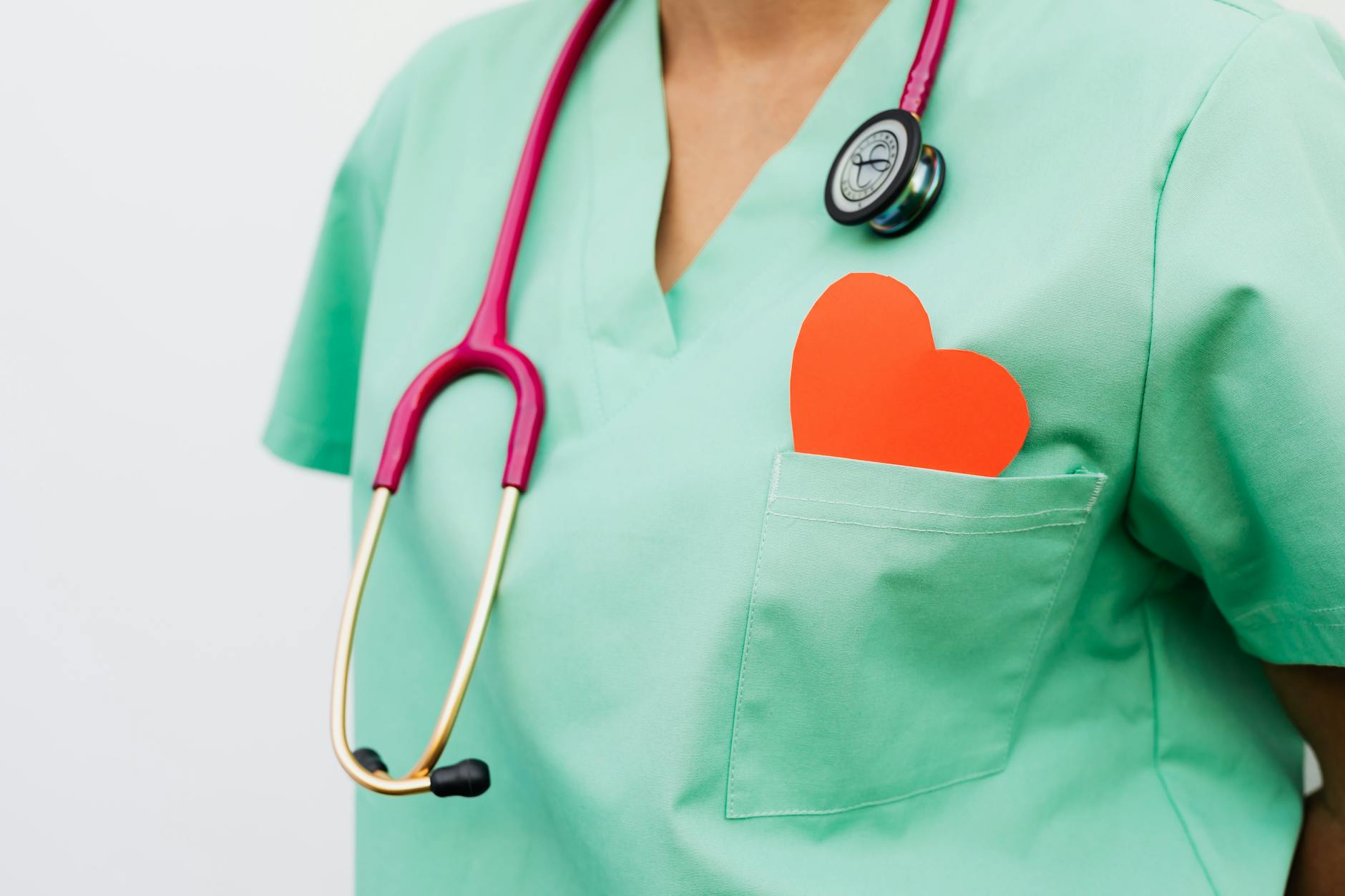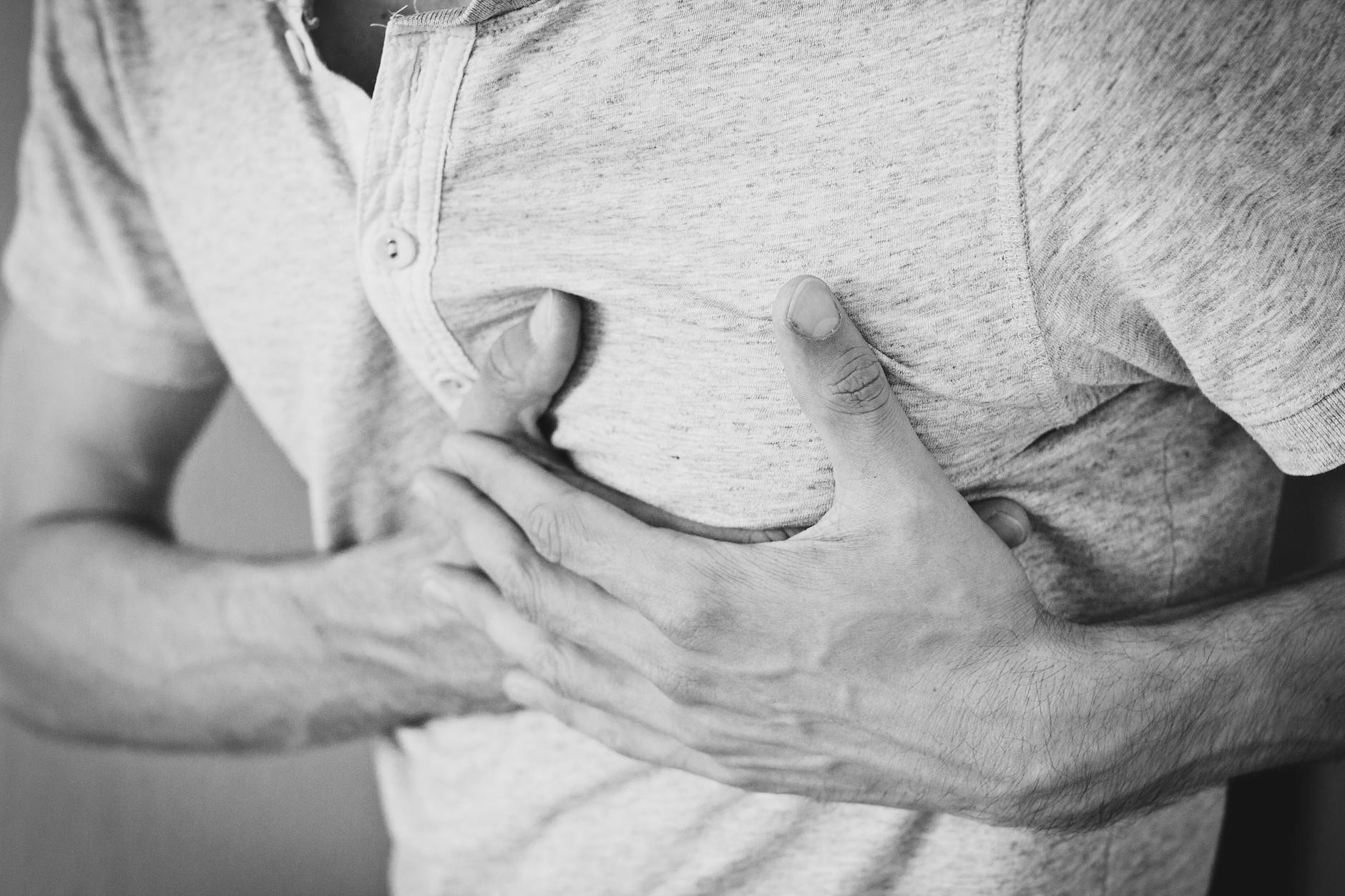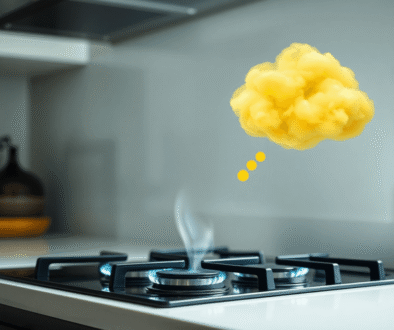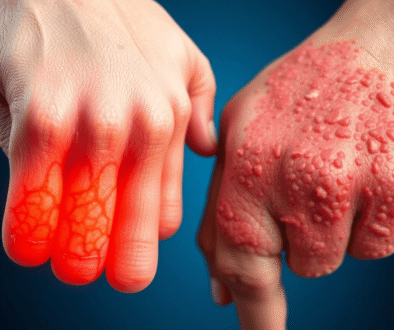Signs of a Heart Attack: What to Watch For and When to Act
Knowing what a heart attack looks like saves lives. Each minute counts when the heart is starved for blood. Spotting warning signs early can mean the difference between full recovery and lasting harm.
Many people picture severe chest pain, but the signs aren’t always clear or sudden. Chest discomfort, pain spreading to the arm or jaw, trouble breathing, or a cold sweat can all be red flags. Some people feel tired or sick to their stomach before they realize what’s wrong.
The risk can touch any of us, at home, at work, or out with friends. We’ll share what to watch for—so we’re ready to act fast and help ourselves or someone else get the care they need.
What Happens During a Heart Attack
A heart attack can hit fast or build slowly, but inside the body, the story follows a common path. Picture your heart as a hard-working pump, never resting. When that pump’s lifeline—fresh, oxygen-rich blood—gets cut off, even for a short time, damage starts right away. Every second matters.
 Photo by Kaboompics.com
Photo by Kaboompics.com
Blocked Blood Flow
In most cases, fatty deposits or “plaque” line the walls of coronary arteries. Over time, these deposits harden and narrow the artery, like a garden hose slowly filling with mud. If a chunk of plaque cracks open, blood tries to fix it by forming a clot. But that clot can block blood from reaching a part of the heart.
- Plaque rupture starts the sudden crisis.
- Blood clot forms and blocks the artery.
- Oxygen supply stops for the tissue past the blockage.
You can read more about this chain reaction in the detailed breakdown from Mayo Clinic.
Heart Muscle Under Attack
When the blood stops flowing, heart muscle cells run out of oxygen. The cells begin to die in minutes. This is the true danger zone. The longer the blockage lasts, the bigger the area of damaged heart muscle becomes. Even after blood flow returns, some cells may be lost for good.
- Pain or pressure in the chest may signal this damage.
- Shortness of breath, sweating, or nausea can also show up as the body reacts.
Details on the medical process and why quick care matters are outlined by the American Heart Association.
What’s Happening Inside Your Body
During a heart attack:
- A clot blocks blood flow in a coronary artery.
- Heart muscle cells on the other side lose their oxygen supply.
- Without oxygen, those cells get injured or die.
- The heart’s ability to pump takes a hit, which can affect the whole body.
Think of it like a power outage in one part of your home. The longer the power is out, the harder it is to get things back to normal.
The Cleveland Clinic provides a clear rundown of the physical changes during a heart attack in their resource on heart attack symptoms and treatment.
Why Fast Action Saves Lives
Every minute counts. Quick action can save heart muscle, reduce damage, and help us heal better. Never wait to call for help if you notice signs in yourself or someone nearby. The faster the blood flow returns, the better the heart recovers.
Knowing what happens when a heart attack strikes means we’re less likely to brush off the warning signs. Our heart deserves every chance we can give it.
Classic Warning Signs of a Heart Attack
Heart attack symptoms have a way of getting your attention. Some signs are loud and clear, like crushing chest pain, while others sneak up, masked as indigestion or fatigue. We may see warnings in the form of discomfort, breathlessness, or even a cold sweat for no reason. Recognizing these classic signals gives us the power to act fast.
Chest Pain or Discomfort
 Photo by Towfiqu barbhuiya
Photo by Towfiqu barbhuiya
Most heart attacks announce themselves with some form of chest discomfort. This isn’t always sharp pain. It can feel like:
- Pressure, as if a heavy book sits on your chest.
- Squeezing or tightness that makes it hard to breathe.
- Fullness or aching in the center or left side of the chest.
The feeling often starts slowly. Sometimes, it fades only to return a few minutes later, or it lasts long enough to make us stop what we’re doing. Some people describe it as a band of discomfort that radiates through the upper body. According to the American Heart Association, this kind of chest pain is the main red flag we should never ignore.
Pain Spreading Beyond the Chest
Pain doesn’t always stay put. During a heart attack, it’s common for discomfort to spread:
- Down one or both arms, especially the left.
- Into the shoulders.
- Up to the back, neck, or even the jaw.
This can feel like a dull ache, a weight pressing on the limbs, or a nagging pain that just won’t settle. Some compare it to “shooting” pain or a toothache in the jaw, even when nothing else seems wrong. Spreading pain often confuses people, but it’s a classic signal that the heart is in trouble. The CDC lists these symptoms as common, and not just in older adults.
Shortness of Breath
Trouble catching your breath isn’t just about exercise or walking up stairs. With a heart attack, breathing can be hard—even when you’re sitting still. You might notice:
- A sudden struggle to fill your lungs.
- Feeling winded after simple tasks, like getting dressed.
- Needing to take deep breaths but still not feeling satisfied.
Shortness of breath can happen with or without chest pain. Sometimes, it’s the only sign, especially in older adults or women. This symptom puts extra stress on the heart and should never be brushed off. For a more detailed list of possible presentations, check out Mayo Clinic’s guide on heart attack symptoms.
Other Accompanying Symptoms
Heart attacks don’t follow a script. Other symptoms often appear with or without pain. Common ones include:
- Breaking out in a cold sweat, even in a cool room.
- Feeling nauseous or actually vomiting.
- Getting lightheaded or dizzy, sometimes to the point of nearly passing out.
- Sudden, severe fatigue that doesn’t match activity.
These symptoms might show up alone, especially in women and older adults. Sometimes you’ll notice two or three at once. Each one is the body’s way of waving a red flag, warning us something serious is happening. The Heart Association explains that while these signs vary, none should be ignored—especially if paired with any chest discomfort or trouble breathing.
Staying alert to these classic warning signs gives us the best chance of getting help fast and saving a life.
Atypical and Early Signs: What To Watch For
Heart attack warnings don’t always follow the usual script. Some show up as odd belly pain, nagging fatigue, or mild discomfort that comes and goes. These different signs happen often in women and seniors, but anyone can miss or shrug them off. Paying close attention could save your life or someone close to you.
Symptoms in Women and Older Adults
Women and seniors often get heart attack symptoms that aren’t always obvious. Instead of sharp chest pain, they may notice:
- Stomach pain or indigestion that feels like the flu or bad heartburn.
- Extreme tiredness with no clear reason, even after resting.
- Sudden sweating, nausea, or feeling faint.
- Anxiety or a sense of panic that starts out of nowhere.
For women, pain might show up in the jaw, neck, back, or even shoulders. It can linger for days, feel more like pressure or soreness, and is easy to blame on stress or other issues. Seniors might chalk up fatigue or aches to getting older, but these can signal the heart isn’t getting enough blood.
Learn more about these unique warning signs by checking the American Heart Association’s guide to heart attack symptoms in women or the Mayo Clinic’s advice for heart disease in women.
Mild or Intermittent Symptoms
Not all heart attacks start with crushing chest pain. Many begin with mild or brief symptoms, like:
- Chest pressure that feels more annoying than painful.
- A sense of fullness, like after a big meal.
- Mild discomfort in the arms, neck, back, or jaw.
- Unexplained tiredness or weakness.
- Light-headedness or breaking out in a cold sweat.
Sometimes these signs appear, fade, and return—often tricking people into waiting before getting help. It’s easy to ignore them, but doing so can be risky. Even if symptoms don’t last long, your heart may still be in trouble.
For a helpful overview of early and mild symptoms, visit the American Heart Association’s warning signs page and the Mayo Clinic’s breakdown of heart attack emergencies.
Silent Heart Attacks
Some heart attacks slip by, almost invisible. These “silent” heart attacks may cause no pain or just vague symptoms like sudden tiredness, belly upset, or shortness of breath.
People often find out much later—sometimes during a doctor visit or heart scan—that they’ve had a heart attack. Silent heart attacks strike more often in people with diabetes, older adults, or those with a high tolerance for pain.
Missing these signs means missing a chance for early treatment. Knowing your risk can help you spot trouble before damage stacks up. Find a clear explanation on silent heart attack risks and signs at Cleveland Clinic or read an update on silent heart attacks in women from Go Red for Women.
 Photo by Engin Akyurt
Photo by Engin Akyurt
When To Seek Immediate Help
Spotting a heart attack fast can save a life. Minutes matter. If chest pain feels strange, heavy, or never quite goes away, waiting could be deadly. Some signs may seem mild or even fade, but the risk stays high. Getting help right away makes a full recovery much more likely.
 Photo by freestocks.org
Photo by freestocks.org
Key Moments to Call Emergency Services
We can’t ignore certain warning signs. These hold true for everyone:
- Chest pain or discomfort lasts more than five minutes, or keeps coming back.
- Pain or pressure spreads beyond the chest to arms, back, neck, jaw, or stomach.
- Shortness of breath comes on, even with little or no effort.
- Breaking out in a cold sweat, nausea, vomiting, or sudden dizziness show up without clear cause.
If any of these hit, don’t drive yourself or wait “just a little longer.” Calling 911 means help arrives faster, and treatment can start on the way to the hospital. The Mayo Clinic’s first aid guide stresses this: better safe than sorry. Never gamble with chest pain.
Don’t Wait for Every Symptom
People hope the pain will fade. Some wait hours or even days. That choice often ends in tragedy. Certain people—like women, older adults, and those with diabetes—may not have severe chest pain. Milder signs could still signal a heart attack. If unsure, call for help. Never wait for all signs to appear.
The American Heart Association explains the risks of waiting and why action now improves survival.
What to Do While Waiting for Help
If someone shows heart attack symptoms:
- Sit them down and keep them calm.
- Loosen tight clothing. Don’t let them move around.
- Offer aspirin (if not allergic), which can help thin the blood.
- Don’t let them eat or drink.
- If they become unconscious, begin CPR if trained.
Delays kill heart muscle. Acting fast and calling for help right away gives the best shot at survival. Review more details on when to go to the ER for heart symptoms from emergency doctors.
Knowing when to act is our strongest tool. Every second can mean healthy years ahead.
Reducing Risk After a Heart Attack
Getting through a heart attack is only part of the story. What comes next can shape our future health. We can tip the odds in our favor by building habits that protect the heart. Recovery starts with small shifts and steady support. These steps not only lower the risk of another heart attack, but can improve quality of life.
Making Lasting Lifestyle Changes
Often, the best protection after a heart attack lives in our daily choices. The heart depends on what we eat, how we move, and how we handle stress. Even old habits can change with patience and clear goals.
Some practical steps we can take include:
- Stop smoking for good. Giving up tobacco is one of the most powerful steps to protect the heart. The risk of another heart attack drops soon after quitting.
- Eat for heart health. Choose more veggies, fruits, lean protein, and whole grains. Cut back on salt and processed food. Pay attention to portion sizes and keep meals balanced.
- Move every day. Regular activity makes the heart stronger and helps manage weight. Even a brisk walk for 30 minutes most days can make a difference.
- Keep stress in check. Chronic stress strains the heart. Simple tools like deep breathing, meditation, and hobbies can help soothe worry and calm the body.
The American Heart Association offers advice on these practical steps for heart attack recovery.
We do not have to change everything overnight. Building new routines, one step at a time, lays the groundwork for success.
Follow-Up Care and Cardiac Rehab
Good recovery doesn’t happen alone. Ongoing support, check-ins, and supervised exercise keep us on track and help prevent another heart attack.
 Photo by Engin Akyurt
Photo by Engin Akyurt
Follow-up care means more than just medicine. It’s a full plan, shaped by our doctor’s advice and our personal history. Key parts include:
- Regular checkups. Routine visits help spot problems early and adjust medication if needed.
- Medicines as prescribed. Many people need drugs to lower blood pressure, cholesterol, or manage blood sugar. Skipping pills raises risk.
- Cardiac rehab programs. These are structured plans with safe exercise, education, and support. Cardiac rehab helps build endurance and confidence. For many, these programs lower the odds of another heart event and are tailored to each person’s needs. The Mayo Clinic explains how cardiac rehab works and its real benefits.
- Support for the long run. Meeting others who are on the same path—through group classes or online—can keep us motivated and less alone.
We don’t have to face heart recovery without help. Cardiac rehab brings together experts, coaching, and community. For a detailed look at what to expect in these programs, Cleveland Clinic’s guide on cardiac rehab phases and exercises is a useful resource.
By sticking with check-ups and making healthy changes, we can strengthen the heart and build a safer path forward.
Conclusion
We hold real power when we know the warning signs of a heart attack. Being able to spot chest pressure, strange pain in the jaw or arm, trouble breathing, or sudden tiredness means we can help ourselves and others faster. Quick action turns minutes into hope and gives every heart a better chance to heal.
Sharing what we’ve learned protects not just ourselves, but those we care about. Let’s talk with friends and family about the symptoms and encourage each other to act at the first sign.
We can help build a safer future, one conversation at a time. Our words may even save a life.
Thank you for reading. Let’s keep looking out for one another—please share your thoughts or your own experiences below.


